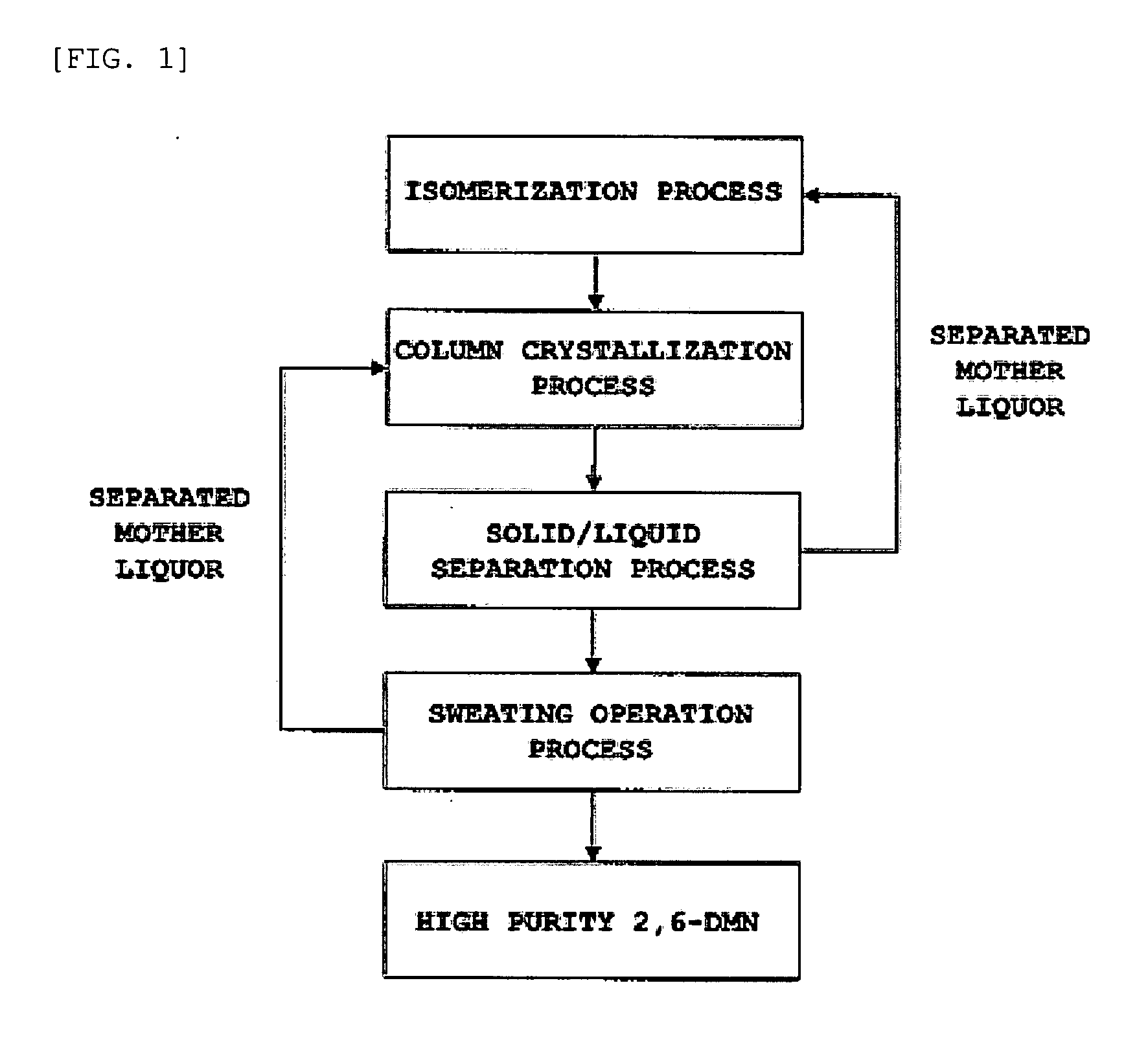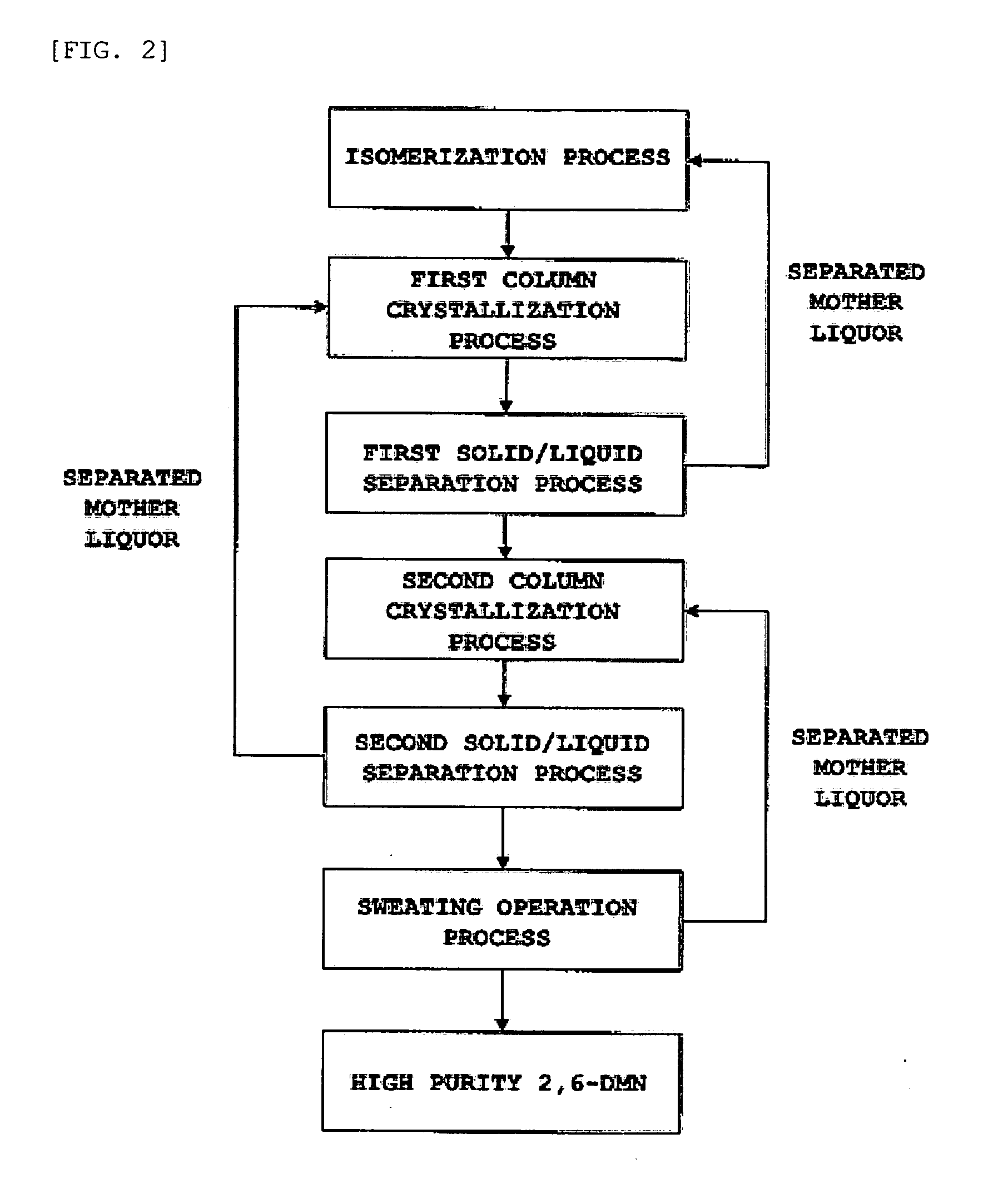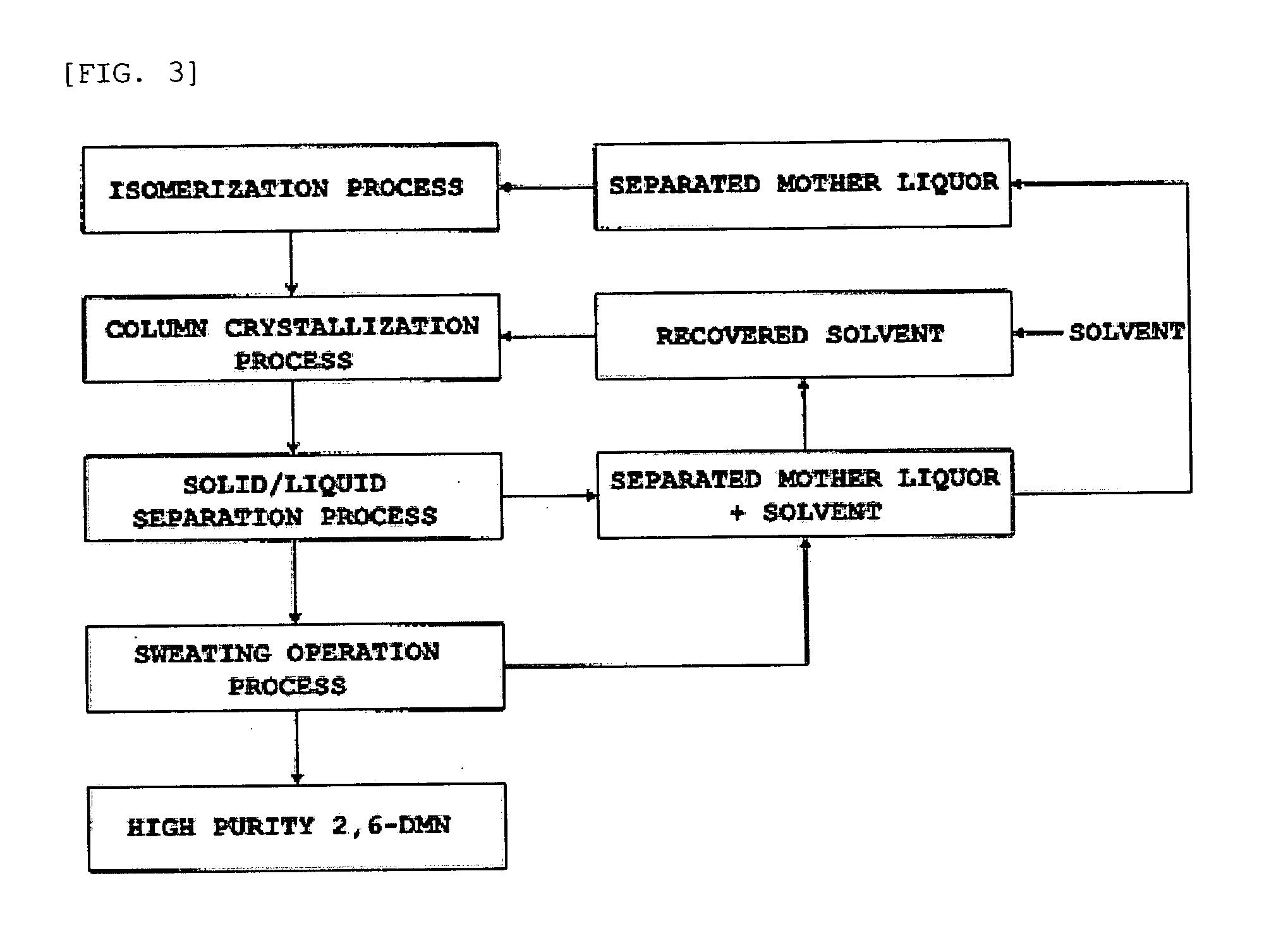Method for separating and purifying 2,6-dimethylnaphthalene
- Summary
- Abstract
- Description
- Claims
- Application Information
AI Technical Summary
Problems solved by technology
Method used
Image
Examples
examples 1 to 6
Separation and Purification of Crystals with Varying Compositions of the Raw Material to be Introduced
[0043]Separation and purification of the crystals according to the composition of the raw material to be introduced were performed by the method for separation and purification illustrated in FIG. 1.
[0044]70 kg each of mixtures of dimethylnaphthalene isomers (crude DMN) containing 22.71 to 46.23% by weight of 2,6-dimethylnaphthalene, was introduced into a 100-L column crystallization vessel equipped with a jacket, and a thermal medium was circulated in the jacket of the column crystallization vessel to maintain the temperature of the isomeric mixture at a temperature 10° C. higher than the melting point expected according to the composition for 30 minutes. Subsequently, the isomeric mixture was cooled to 0 to 45° C. at a cooling rate of 0.1° C. / min, and the temperature was maintained at the final crystallization temperature for 30 minutes. The crystals thus produced were separated f...
examples 7 to 12
Separation and Purification of Crystals at Varying Cooling Rates
[0047]In order to separate and purify 2,6-dimethylnaphthalene crystals from mixtures of dimethylnaphthalene isomers containing 41.71% by weight of 2,6-dimethylnaphthalene, at varying cooling rates (0.1 to 1° C. / min), the separation and purification of crystals during the crystallization process were carried out in the same manner as in Example 1. The process of the sweating operation was also carried out in the same manner as in Example 1.
[0048]The results of the separation and purification at varying cooling rates are presented in the following Table 5.
TABLE 5Crystals obtained afterCrystals obtained aftercrystallizationsweating operationMixtureEx. 7Ex. 8Ex. 9Ex. 10Ex. 11Ex. 12of DMNCoolingCoolingCoolingCoolingCoolingCoolingisomersraterateraterateraterate(Feed)0.1° C. / min0.3° C. / min1° C. / min0.1° C. / min0.3° C. / min1° C. / minPurity41.7190.7278.1673.5199.3298.7197.08of 2,6-DMN (%)Yield100.066.757.840.349.645.231.2(%)
[0049]As...
examples 13 to 18
Separation and Purification of Crystals at Varying Crystallization Temperatures
[0050]In order to separate and purify 2,6-dimethylnaphthalene crystals from a mixture of dimethylnaphthalene isomers containing 43.25% by weight of 2,6-dimethylnaphthalene at varying crystallization temperatures (final crystallization temperature: 65, 55 and 45° C.), the separation and purification of crystals were carried out in the same manner as in Example 1. The process of sweating operation was also carried out in the same manner as in Example 1.
[0051]The results of separation and purification at varying crystallization temperatures are presented in the following Table 6.
TABLE 6Crystals obtainedCrystals obtainedafter crystallizationafter sweating operationMixtureEx. 13Ex. 14Ex. 15Ex. 16Ex. 17Ex. 18of DMNCrystallizationCrystallizationCrystallizationCrystallizationCrystallizationCrystallizationisomerstemp.temp.temp.temp.temp.temp.(Feed)65° C.55° C.45° C.65° C.55° C.45° C.Purity43.2595.7091.3690.7299.52...
PUM
| Property | Measurement | Unit |
|---|---|---|
| Temperature | aaaaa | aaaaa |
| Temperature | aaaaa | aaaaa |
| Percent by mass | aaaaa | aaaaa |
Abstract
Description
Claims
Application Information
 Login to View More
Login to View More - R&D
- Intellectual Property
- Life Sciences
- Materials
- Tech Scout
- Unparalleled Data Quality
- Higher Quality Content
- 60% Fewer Hallucinations
Browse by: Latest US Patents, China's latest patents, Technical Efficacy Thesaurus, Application Domain, Technology Topic, Popular Technical Reports.
© 2025 PatSnap. All rights reserved.Legal|Privacy policy|Modern Slavery Act Transparency Statement|Sitemap|About US| Contact US: help@patsnap.com



